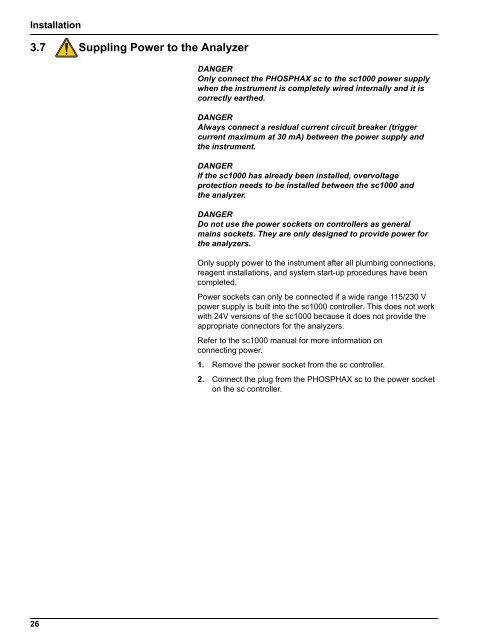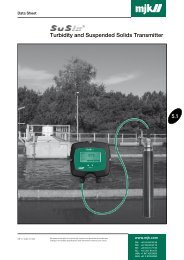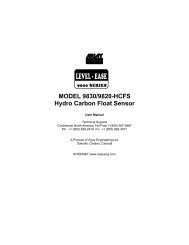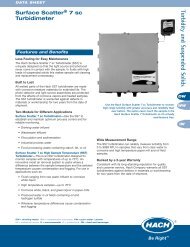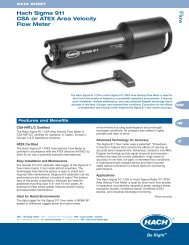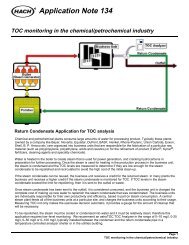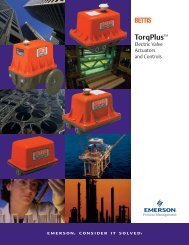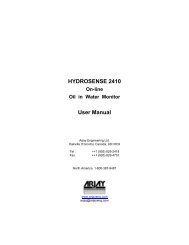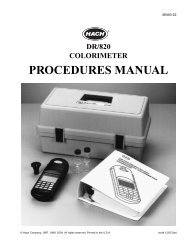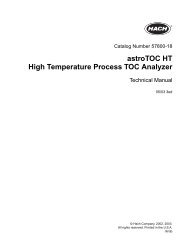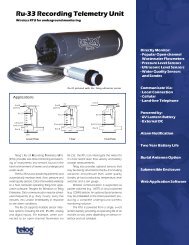PHOSPHAX sc - Can-Am Instruments Ltd.
PHOSPHAX sc - Can-Am Instruments Ltd.
PHOSPHAX sc - Can-Am Instruments Ltd.
Create successful ePaper yourself
Turn your PDF publications into a flip-book with our unique Google optimized e-Paper software.
Installation<br />
3.7 Suppling Power to the Analyzer<br />
DANGER<br />
Only connect the <strong>PHOSPHAX</strong> <strong>sc</strong> to the <strong>sc</strong>1000 power supply<br />
when the instrument is completely wired internally and it is<br />
correctly earthed.<br />
DANGER<br />
Always connect a residual current circuit breaker (trigger<br />
current maximum at 30 mA) between the power supply and<br />
the instrument.<br />
DANGER<br />
If the <strong>sc</strong>1000 has already been installed, overvoltage<br />
protection needs to be installed between the <strong>sc</strong>1000 and<br />
the analyzer.<br />
DANGER<br />
Do not use the power sockets on controllers as general<br />
mains sockets. They are only designed to provide power for<br />
the analyzers.<br />
Only supply power to the instrument after all plumbing connections,<br />
reagent installations, and system start-up procedures have been<br />
completed.<br />
Power sockets can only be connected if a wide range 115/230 V<br />
power supply is built into the <strong>sc</strong>1000 controller. This does not work<br />
with 24V versions of the <strong>sc</strong>1000 because it does not provide the<br />
appropriate connectors for the analyzers.<br />
Refer to the <strong>sc</strong>1000 manual for more information on<br />
connecting power.<br />
1. Remove the power socket from the <strong>sc</strong> controller.<br />
2. Connect the plug from the <strong>PHOSPHAX</strong> <strong>sc</strong> to the power socket<br />
on the <strong>sc</strong> controller.<br />
26


